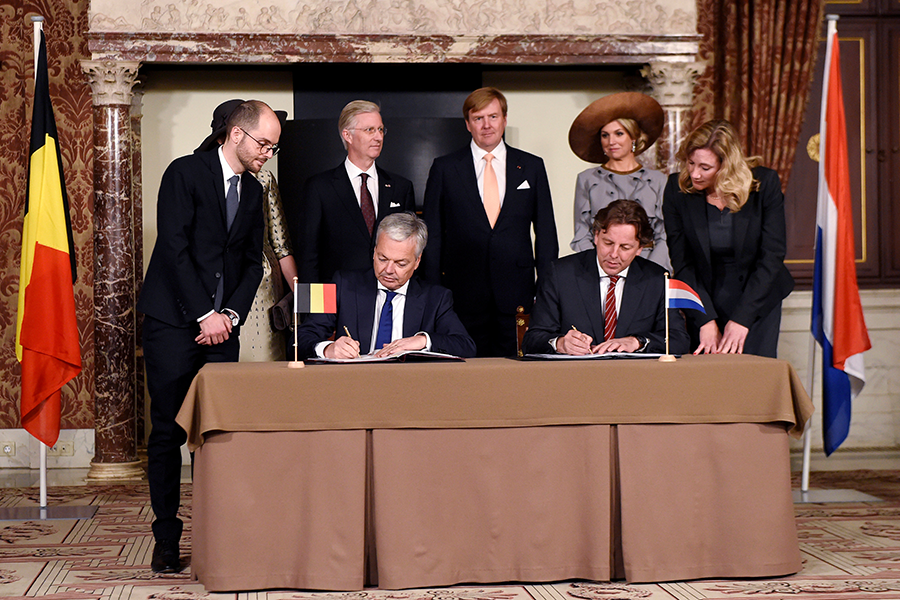Why did Belgium and the Netherlands just swap land?
Loading...
If you’ve heard of war, you’ve heard of land swaps. But Belgium and the Netherlands have a peachier model of trading territory.
The two countries signed a treaty on Monday that redraws their borders, putting two small parcels of Belgian land along the Meuse River under the Netherlands’ control in exchange for a slightly smaller piece lying adjacent to it, on the opposite side of the river.
At the signing ceremony, Dutch foreign minister Didier Reynders called it “proof that borders can be redrawn in a peaceful way”, according to the Express.
“What’s important to underline is that today, in Europe, we’re able to modify the borders without using weapons,” added Marcel Neven, the mayor of nearby Visé, Belgium.
The deal has its roots in the 1961 straightening of the river, which made it easier for ships to navigate the winding waters of a historical trade corridor. An aid to boat captains, the straightening also created unforeseen problems for Belgian authorities, who say that the parcels have become “enclaves of lawlessness” that they can’t easily reach, since the Meuse cuts them off from the rest of the country.
It’s a rare example of international goodwill over territorial issues, one made easier, perhaps, by neither country standing to lose much in the way of resources. No one lives on the lands, nor do they host any significant buildings. And the amount of territory on the line is relatively small – the Netherlands will come out with an extra 15 soccer fields’ worth. But it also required the goodwill to go through with years of legal wrangling, making it a testament to the close friendship between the two countries.
That friendship made all the difference, Belgian military historian Luc De Vos told the Associated Press in 2015.
“It is possible between Belgium and the Netherlands because these countries have a lot of ties for centuries and after the second world war territory was no longer that important,” he said then.
For years, Belgian authorities had complained that the lands on the opposite side of the river were turning into havens for drug dealers and prostitution, but the process of trading the lands got a jolt in 2012 when passersby discovered a body.
Belgian police, prosecutors and forensics units had trouble reaching the scene: as the area, a peninsula, had no proper landing zones, they couldn’t easily travel there by boat, nor could they reach it by crossing into the Netherlands without special permission, according to Deutsche Welle.
"You had to jump from the boat onto the shore. You needed to be in shape for this," Mr. Neven, the mayor of Vise, told the AP.
Theo Bovens, the governor of the Netherlands’ Limburg province, told Dutch News that drafting the treaty was a time-consuming process.
“Ministries from both countries, the water authorities, the land registry, the provincial governments, three local councils and districts are involved,” he said.
The treaty signing is part of a three-day visit to the Netherlands by Belgium’s king and queen. The deal will go before both countries’ parliaments for approval, with the redrawing of the borders becoming official in January 2018.






